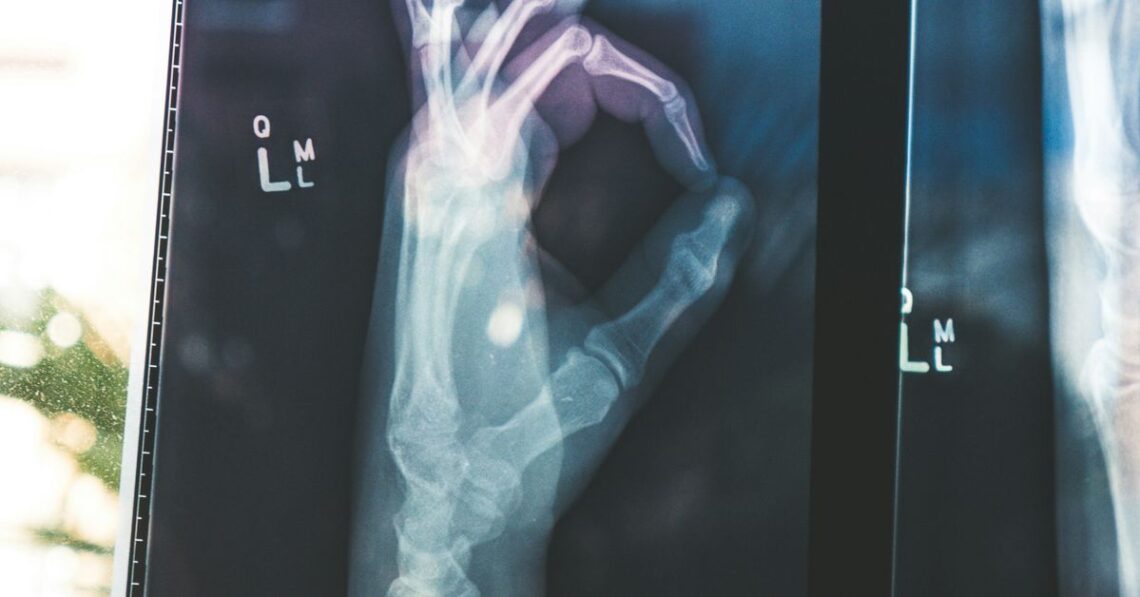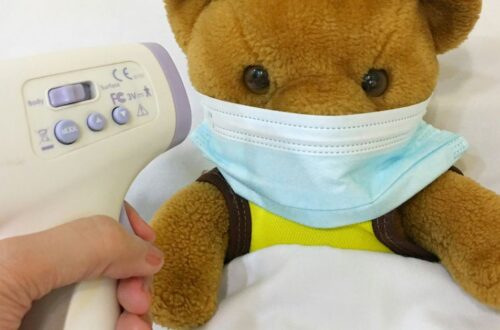Unlocking Community Wellness: What Public Health Officials Wish You Knew
It’s no secret that our health is interconnected. Yet, as we hustle through our daily lives—juggling work, family, and maybe even a side project or two—many of us tend to overlook the broader picture of community wellness. What if I told you that our individual health is heavily influenced by the health of those around us? Public health officials have been waving their hands in the air, trying to get our attention on this very topic. They have insights and knowledge that could empower us all, yet, somehow, these messages often get lost in the shuffle. So, let’s take a dive into what they wish we all understood about community wellness.
The Foundation of Community Wellness
Community wellness is not just a buzzword tossed around in health seminars; it’s a multifaceted concept that includes physical, mental, and social well-being. Think of it as a three-legged stool: if one leg is wobbly, the whole thing is at risk of tipping over. Public health officials often stress how interconnected these aspects are. When we talk about health, it’s easy to get bogged down in statistics or focus solely on physical ailments. However, the emotional and social elements play just as critical a role.
Physical Health: More Than Just Absences
Sure, having access to healthcare and maintaining physical fitness are essential components of individual health. But here’s the kicker: many public health officials argue that the key to preventing diseases lies in community-level initiatives. For instance, take a look at initiatives like free vaccination drives or community fitness programs. It’s not just about getting a flu shot; it’s about ensuring that the entire community is protected against outbreaks.
Remember the last time you were part of a community event? Maybe it was a block party or a health fair. These gatherings do more than just provide free food (although, let’s be honest, who doesn’t love free snacks?). They foster relationships and build networks. A significant number of experts believe that social interactions can lead to improved health outcomes. So, next time you see a local health fair, consider stopping by—not just for the free goodies but for the connections you might forge.
Mental Health: The Silent Crisis
Now let’s turn our attention to that often overlooked, yet crucial aspect of wellness: mental health. Public health officials often emphasize that mental health is as important as physical health, yet societal stigma still lingers. It struck me that, despite the increasing conversations around mental health, many people still grapple with the idea of seeking help. I remember a friend telling me that he didn’t want to go to therapy because he feared being labeled as “crazy.”
The truth is, mental health challenges can affect anyone—regardless of age, background, or social standing. It’s important to remember that mental wellness is a community issue. Consider how programs that offer community support groups or mental health days can play a role in fostering an environment where everyone feels safe to express their struggles. Public health officials advocate for more funding and support for these types of initiatives, but it’s up to us, as community members, to engage and advocate for ourselves and each other.
Social Connections: The Heartbeat of Wellness
Let’s take a moment to talk about social connections. Did you know that a strong social network can actually extend your lifespan? No kidding! Studies have shown that individuals with robust social ties tend to live longer than those who are more isolated. Public health officials have taken note of this phenomenon, emphasizing the importance of community bonds in promoting overall wellness.
Think of your own social circles. Do you have friends or family who lift you up? Those connections can act as a buffer against stress and anguish, especially during tough times. I remember a particularly stressful work week when my friends rallied around me, dragging me out for a night of laughter and frivolity. Those moments not only lightened my mood but also reminded me of the importance of having a support system.
Building a Healthier Community Together
So, what can we do to unlock community wellness? According to public health officials, it starts with education and action. Here are a few strategies they often recommend:
- Engage in Local Initiatives: Whether it’s volunteering at a local food bank or participating in community clean-up days, getting involved can foster a sense of belonging and responsibility.
- Support Local Health Programs: Advocate for and participate in local health initiatives that promote wellness, such as mental health awareness campaigns or physical fitness challenges.
- Educate Yourself and Others: Knowledge is power! Share information about health resources and community programs with friends and family. This creates a ripple effect that can inspire others to take action.
The Role of Public Health Officials
Public health officials play a pivotal role in shaping the wellness of our communities. They work tirelessly, often behind the scenes, to implement programs and policies that promote health. Yet, their efforts can only be successful when they have community support. It’s not just about handing out flyers on health tips; it’s about creating a culture of wellness. If you’ve ever attended a town hall meeting, you’ve likely seen how engaged citizens can influence public health decisions—don’t underestimate your voice!
Understanding Health Disparities
One of the sobering realities of public health is the existence of health disparities. These disparities often stem from socioeconomic factors, access to healthcare, and systemic inequalities. Public health officials are acutely aware that not everyone enjoys the same level of health and wellness. Some communities—often marginalized—face significant barriers to accessing necessary resources.
This is where community advocacy comes into play. It’s crucial for individuals to recognize these disparities and push for equitable health policies. I recall attending a seminar where a public health official shared a powerful statistic: “Communities with higher socioeconomic status have better health outcomes.” The implication was clear; we must work to level the playing field. The message is loud and clear: a healthy community is a united community.
The Power of Prevention
It’s often said that an ounce of prevention is worth a pound of cure. This is a mantra that resonates deeply with public health officials. Preventative measures—like vaccinations, health screenings, and educational outreach—can save lives. However, these initiatives require community buy-in to be effective.
Take childhood vaccinations as a prime example. Public health officials emphasize that vaccines are not just a personal choice but a community responsibility. When a significant portion of a population is vaccinated, it creates herd immunity, protecting those who cannot be vaccinated due to medical reasons. (I can’t help but remember the uproar during the measles outbreaks—who knew a tiny virus could cause so much chaos?)
Encouraging Healthy Lifestyles
Encouraging healthy habits within a community can create a lasting impact. Public health officials often advocate for local farmers’ markets, community gardens, and fitness programs. By providing access to fresh produce and opportunities for physical activity, communities can foster a culture of wellness. I remember the excitement at our neighborhood farmers’ market—children giggling as they picked apples while parents discussed recipes. It felt like a small victory for community health.
The Mental Health Revolution
As awareness of mental health issues continues to grow, public health officials are leading the charge for change. It’s not enough to simply acknowledge mental health; we must actively work to reduce stigma and improve access to resources. This includes advocating for mental health days in schools and workplaces, which I think could be a game changer. Imagine a world where taking a day off to focus on your mental well-being is seen as normal as taking a day off for the flu!
Community support groups also play a crucial role in this mental health revolution. Many public health officials encourage the establishment of peer-led support groups, where individuals can share their experiences in a safe, judgment-free environment. I remember hearing about a support group that transformed lives by providing a space for people to connect and heal together. It’s these small, local efforts that can lead to monumental shifts in community wellness.
Technology: A Double-Edged Sword
As we move further into the digital age, technology has become both a friend and foe in the realm of public health. On one hand, telehealth has made it easier for individuals to access services, particularly in rural areas. On the other, the over-reliance on technology can lead to social isolation. Public health officials are grappling with how to strike a balance.
Consider the rise of health apps; they can help people track their fitness goals, monitor mental health, and even connect with others. But they can also create a false sense of connectivity. (I mean, scrolling through Instagram doesn’t quite compare to a heart-to-heart over coffee, does it?) Public health officials are urging communities to harness technology while also promoting face-to-face interactions.
Taking Action: What You Can Do
Feeling inspired yet? The truth is, community wellness is a shared responsibility, and every little bit helps. Here are a few actionable steps you can take to make a difference:
- Get Informed: Stay updated on local health issues and initiatives. Knowledge is power, after all!
- Participate: Whether it’s attending community meetings or volunteering, active participation can amplify your voice.
- Spread the Word: Share information about health resources and programs with friends and family. You never know who might benefit from your knowledge.
The Road Ahead: A Collective Effort
As we look to the future, it’s clear that community wellness requires a collective effort. Public health officials are calling on individuals, families, and organizations to work together to create healthier environments. The more we advocate for each other, the more we can influence systemic changes that promote wellness.
It’s a tall order, but the good news is that change is already happening in many communities. I’ve seen firsthand how grassroots movements can lead to significant improvements in public health policies. When people come together with a shared purpose, incredible things can happen. So, let’s continue the dialogue, engage in our communities, and strive for a healthier future. After all, as they say, it takes a village—or perhaps, a whole community—to raise a healthy society.
Final Thoughts: Your Role in Community Wellness
If there’s one thing public health officials wish you knew, it’s this: your health is not just your own; it’s intertwined with the health of your community. By understanding and embracing this interconnectedness, you can play a vital role in unlocking community wellness. So, let’s challenge ourselves to be proactive, supportive, and engaged. Together, we can create a healthier tomorrow—for ourselves and for generations to come.






